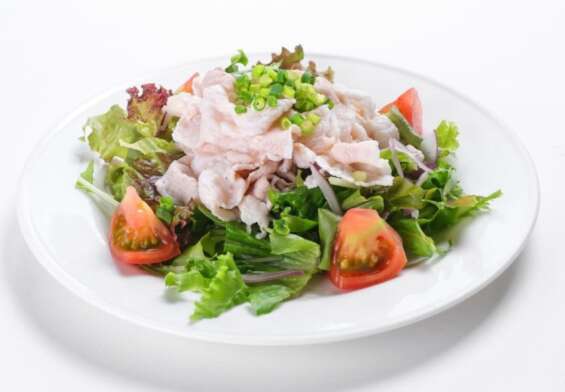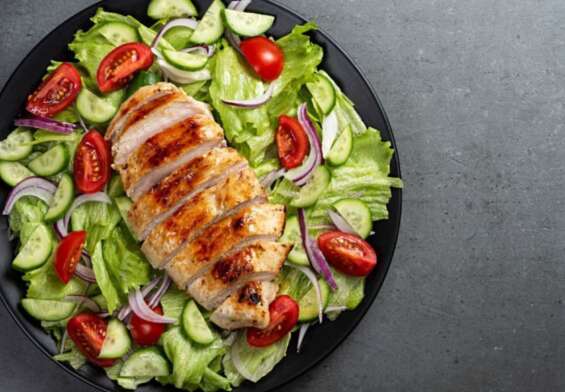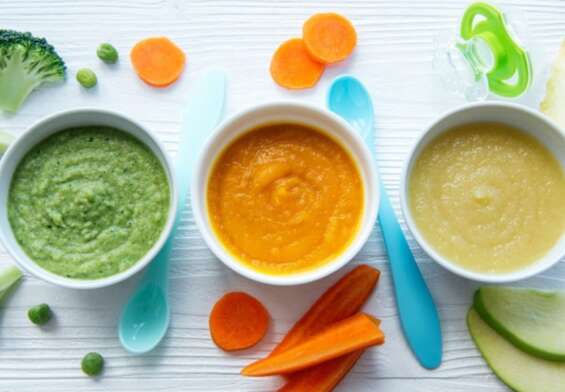
Elimination Diet: Identifying Food Sensitivities for Health
An Elimination Diet is a type of dietary plan used to identify potential food allergies and sensitivities. It involves removing certain foods that may be causing adverse reactions in the body and then reintroducing them one at a time to determine which ones are causing the problem. Elimination Diets can be used to help manage the symptoms of allergies, intolerances, and autoimmune diseases. They can also help to improve overall health and well-being.
What is an Elimination Diet and How Can it Help You?
An elimination diet is a type of diet that seeks to identify which foods are causing negative reactions in your body. It typically involves cutting out certain foods, such as dairy, gluten, or other common allergens, for a period of time and then reintroducing them one at a time to see how your body responds. It’s like playing a game of detective, but instead of finding clues, you’re searching for which foods are causing problems.
The Elimination Diet can be a great way to find out which foods are causing issues like bloating, skin breakouts, and brain fog. By removing the potential troublemakers from your diet, you can begin to get to the root of the problem and figure out what’s causing your discomfort. Plus, it’s a great excuse to try some new recipes and get creative in the kitchen!
So why not give the Elimination Diet a try? Not only will it help you figure out which foods are causing problems, but it can also be an enjoyable journey of discovery. Who knows? You may find out that you’re more of a vegan than you thought!
How to Develop and Follow an Elimination Diet Plan
An elimination diet plan is a great way to figure out what foods your body likes and doesn’t like. It’s a way to learn about your body and how different foods affect you, and it can be a lot of fun! Here’s how to develop and follow an elimination diet plan:
Step 1: Identify the foods you want to eliminate. These could be foods you suspect cause you issues, or just foods you want to cut out of your diet for a while. Some common foods to eliminate include dairy, gluten, processed foods, and sugar.
Step 2: Plan your meals. You’ll want to make sure you’re still getting all the nutrients you need while eliminating the foods you want. Try to plan balanced meals with plenty of vegetables, healthy fats, and proteins. It’s also a good idea to plan ahead so you don’t get stuck in a situation where you don’t have anything to eat.
Step 3: Get creative. A lot of the fun of an elimination diet is finding new recipes and trying new foods. Look for recipes that are free of the foods you’re eliminating, and don’t be afraid to get creative. Try new spices and flavors, and you might be surprised by what you like!
Step 4: Keep track of your progress. It’s important to keep track of how your body is reacting to the foods you’re eliminating. Take notes about how you feel after eating certain meals and what your energy levels are like.
Step 5: Reintroduce foods one at a time. Once you’ve completed your elimination diet, the next step is to slowly reintroduce the foods you eliminated. Start with one food at a time, and keep track of how your body reacts. This will help you figure out which foods are good for you and which ones cause you issues.
Following an elimination diet can be a great way to learn more about your body and what foods work best for you. It can also be a lot of fun! So don’t be afraid to give it a try and see how it goes.
Evaluating Your Symptoms to Determine if an Elimination Diet is Right for You
Are you tired of feeling tired? Tired of feeling bloated, gassy, and generally uncomfortable after every meal? If you’re aching for relief, an elimination diet may be just what the doctor ordered!
An elimination diet is a great way to pinpoint food sensitivities and intolerances that could be causing your symptoms. But how do you know if it’s right for you? Read on to find out!
First and foremost, you should be experiencing symptoms after eating certain foods. If after eating a certain food your body feels like it’s in revolt, it’s a good indicator that something’s not quite right.
Second, you should be willing to go on a diet. That’s really the whole point of an elimination diet – restricting certain foods to see how your body responds. It’s also important to note that this type of diet is not a weight-loss plan and should not be used for that purpose.
Finally, if you’re a foodie, an elimination diet may not be the best choice for you. You’ll be required to restrict certain foods, so your diet will be pretty limited. But don’t worry – there are plenty of delicious recipes out there to make the transition easier.
So if you’re ready to take control of your health and get to the bottom of your symptoms, an elimination diet may be the right choice for you!
The Pros and Cons of Following an Elimination Diet
Pros of Following an Elimination Diet
- You can finally put a definitive answer to the age-old question of “What should I have for lunch?” Answer: nothing!
- You can proudly show off your new-found willpower in the face of temptation, especially when it comes to those late-night Taco Bell cravings.
- You can finally get to the bottom of which foods are causing your tummy troubles.
Cons of Following an Elimination Diet
- You may find yourself having to come up with creative ways to make food out of the few remaining items you can eat that don’t make your mouth water.
- You will have to limit your social activities because no one wants to hang out with someone who doesn’t eat anything.
- You may find yourself in a food rut, where you just can’t escape the same few dishes you can eat.
Foods to Include and Avoid on an Elimination Diet
Foods to Include on an Elimination Diet
- Anything made of air: It’s easy to digest, low in calories, and oh so tasty!
- Plain ol’ water: Staying hydrated is essential for good health, and it’s free!
- Foods with one ingredient: Think apples, bananas, and carrots.
- Vegetables prepared without added sauces or spices: Roast those veggies for a delicious, healthy meal.
- Grains like rice and quinoa: They’re a great source of fiber and other nutrients.
Foods to Avoid on an Elimination Diet
- Anything with a face: We know you love animals, so let’s just not.
- Foods that come in a box: They’re usually loaded with preservatives and other unhealthy ingredients.
- Processed sugars: We know they taste good, but they’ll leave you feeling sluggish and tired.
- Alcohol: You don’t need us to tell you why this one’s a no-go.
- Candy: Go ahead and have some, but save it for cheat days!
How to Reintroduce Foods After Following an Elimination Diet
Are you ready to start eating all your favorite foods again after following an elimination diet? Congratulations! You’ve made it through the tough part of the process, and it’s time to start enjoying some of the delicious foods you’ve been missing. Here are a few tips to help you reintroduce foods after following an elimination diet:
Start small. Don’t jump straight into eating a large plate of all the foods you love. Start by adding in one food at a time, and give yourself at least a day before adding in another. This will help you identify any possible reactions you may have to that food.
Give yourself permission to indulge. Don’t feel guilty about indulging in one of your favorite treats. The idea is to enjoy the food, not to feel bad about it!
Take notes. Keeping track of how you feel after eating certain foods can help you identify any potential sensitivities or allergies.
Listen to your body. Pay attention to how your body responds to different foods. If something doesn’t feel right, don’t eat it.
Don’t overdo it. Just because you can eat something doesn’t mean you should. Moderation is key!
Now that you know how to reintroduce foods after following an elimination diet, it’s time to start enjoying the deliciousness you’ve been missing! Bon Appétit!
Tips for Sticking to an Elimination Diet
- Stock your fridge with only “allowed” foods to avoid any temptation.
- Make sure your pantry is full of delicious and nutritious snacks, like kale chips and roasted chickpeas.
- Try to find a friend who is willing to join you on your elimination diet journey – it’s always more fun with a buddy!
- Have a list of quick and easy meals ready to go – you’ll be thankful on those days when you don’t feel like cooking.
- Plan ahead for nights out with friends – scope out the menu and pick something you can eat so you don’t have to worry about ordering something off-limits.
- Don’t forget to treat yourself! No elimination diet should be without some dark chocolate every now and then.
Foods to Eat on an Elimination Diet
- Veggies! Veggies! Veggies! You’ll never go wrong with an array of fresh vegetables, like kale, spinach, carrots, zucchini, and cauliflower.
- Protein-packed options. Think beyond the steak and chicken, and opt for sources of protein like salmon, eggs, lentils, and quinoa.
- Fruit is your friend. Apples, bananas, berries, and oranges are all great options for an elimination diet.
- Healthy fats. Incorporate avocados, nut butters, and olive oil into your meals for a boost of healthy fat.
- Good carbs. Look for whole grains, like brown rice, oats, and quinoa, to provide you with carbohydrates.
- Spices, herbs, and seasonings. Get creative with your cooking and use herbs and spices like garlic, ginger, paprika, and turmeric to add flavor without the added sugar or salt.
- Smoothies and juices. Whip up a smoothie or juice with your favorite fruits and veggies to get your daily dose of nutrition.
- Herbal tea and coffee. Ditch the sugar-laden lattes and opt for herbal tea or plain black coffee for a caffeine fix.
- Bone broth. This nutrient-packed beverage is great for gut health and can be used as a base for soups and stews.
- Fermented foods. Kombucha, sauerkraut, and kimchi are all great options for an elimination diet to help promote gut health.
Preparing Meals for an Elimination Diet
Are you ready to take your elimination diet to the next level? It can be daunting to prepare meals for an elimination diet, but fear not! With a little creativity, you can whip up some delicious and nutritious meals that will help you feel your best.
First, do a little research to determine which foods are on your elimination list. Once you know exactly what you should be avoiding, it will be much easier to get started.
Now, let’s get cooking! Start by stocking your pantry with some basics, like gluten-free grains, legumes, and other staples. You can also pick up some fruits, vegetables, and nuts for snacks.
When it comes to meal planning, it’s best to keep it simple. Stick to one-pot dishes like soups and casseroles that will get you through the week. Try to incorporate a variety of flavors and textures to make meals more interesting.
Finally, don’t forget to treat yourself! Even if you’re avoiding certain ingredients, there are still plenty of delicious treats that you can make. Try experimenting with dairy-free ice cream, sugar-free desserts, and other creative recipes.
By following these tips, you’ll be well on your way to creating some delicious and nutritious meals for your elimination diet. Bon appetit!
The Benefits of Following an Elimination Diet
Are you looking for a way to improve your health? Then you should follow an elimination diet! Sure, it might sound intimidating. But don’t worry – it’s really not that bad! Here are the top benefits of following an elimination diet.
You can find out which foods are causing you problems. We all have different reactions to different foods. An elimination diet allows you to figure out which foods are causing you issues by removing them from your diet temporarily.
You can discover new foods. We often get stuck in a rut when it comes to food. An elimination diet allows you to explore new foods, which can make meals more interesting. Plus, you might discover some new favorites!
You can make healthier choices. By eliminating certain foods, you’re forced to make healthier choices. You’ll be more mindful of the foods you’re eating, which can lead to better overall health.
You can save money. Eliminating certain foods can save you money. Instead of buying expensive processed foods, you can opt for cheaper, healthier options.
You can look better. Following an elimination diet can help you lose weight, clear up your skin, and reduce bloating. Who wouldn’t want to look and feel their best?
So, don’t be intimidated by the idea of an elimination diet. Give it a chance and you’ll be pleasantly surprised at the results!
Use an Elimination Diet to Uncover Food Sensitivities and Allergies
Do you find yourself feeling bloated, gassy, and generally unwell after eating? Are you constantly looking for answers as to why your body is reacting the way it is? Well, the answer might be easier than you think: an elimination diet!
An elimination diet is a great way to uncover any food sensitivities or allergies you may have. Now, before you start thinking it’s going to be a dull and boring process, think again! It’s actually a fun way to get to know your body and discover what foods make you feel your best.
The idea behind an elimination diet is simple: temporarily remove certain foods from your diet to see how your body responds. You’ll start off by removing the most common food sensitivities and allergies such as dairy, wheat, eggs, corn, soy, peanuts, and tree nuts.
Once you’ve removed these foods, you’ll notice how your body feels differently. If you don’t experience any changes, you can slowly start introducing them back into your diet one-by-one. This will help you pinpoint which foods are causing your symptoms.
You can also experiment with other food groups, such as nightshades (tomatoes, peppers, potatoes, and eggplant), legumes, and processed foods. But remember, don’t go overboard and try to remove too much at once. That could have a negative effect on your health.
It’s important to note that an elimination diet isn’t a permanent solution. It’s meant to be a short-term experiment to help you uncover any food sensitivities or allergies. Once you’ve identified the culprits, it’s best to talk to a healthcare professional to get an individualized plan.
So there you have it! An elimination diet can be a fun and effective way to pinpoint any food sensitivities or allergies you may have. So, don’t be afraid to experiment and get to know your body better. Good luck!
Conclusion
The elimination diet is a powerful tool for understanding how certain foods affect our bodies, and can be an effective way to reduce the risk of food allergies and intolerances. It is important to consult with a doctor or nutritionist before beginning an elimination diet to ensure that all nutritional needs are met and that any potential risks are minimized. Implementing an elimination diet can be challenging, but with the right guidance, it can be a simple and effective way to improve health and wellness.











